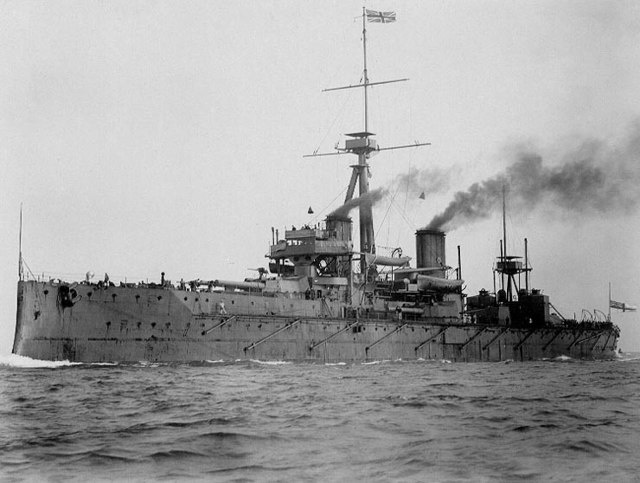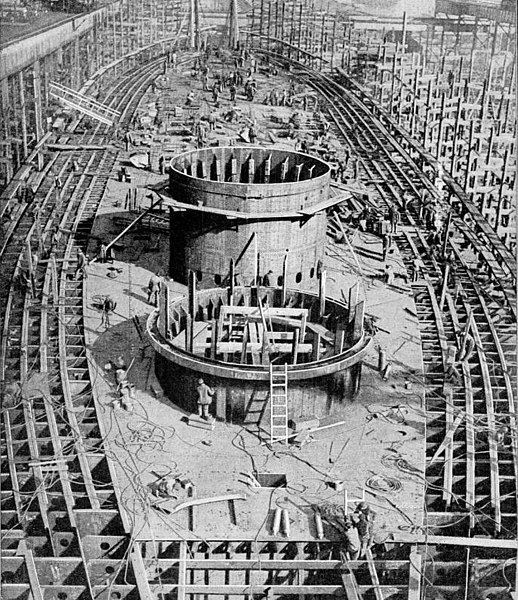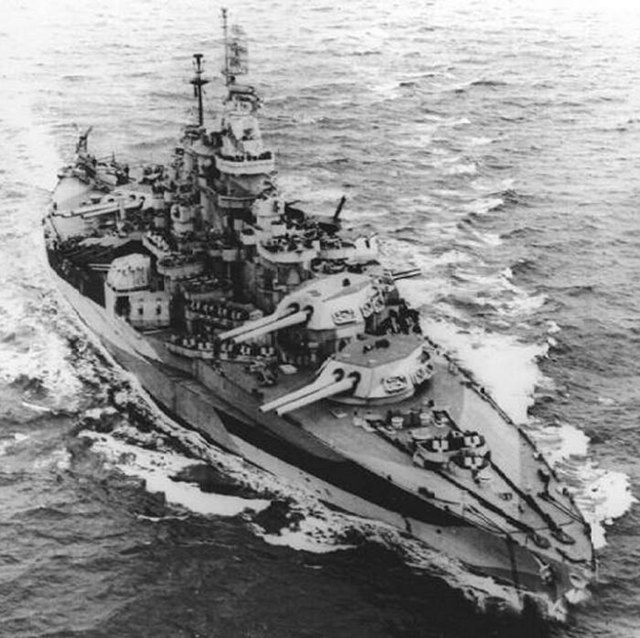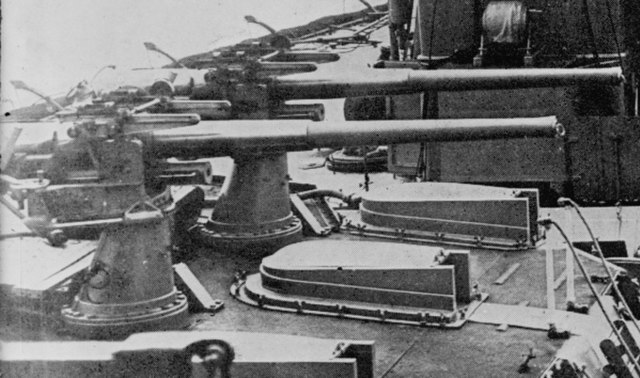Colorado-class battleship
The Colorado-class battleships were a group of four United States Navy super-dreadnoughts, the last of its pre-Treaty battleships. Designed during World War I, their construction overlapped the end of that conflict and continued in its immediate aftermath. Though all four keels were laid, only three ships entered service: Colorado, Maryland, and West Virginia. Washington was over 75% completed when she was canceled under the terms of the Washington Naval Treaty in 1922. As such, the 16" gun Colorado-class ships were the last and most powerful battleships built by the U.S. Navy until the North Carolina class entered service on the eve of World War II.
Colorado steaming off New York City, c. 1932
Hull of Maryland under construction c. 1917
USS Maryland in March 1944
USS West Virginia in her final configuration, June 1944. Note 5 in/38 twin turrets and number of AA guns
The dreadnought was the predominant type of battleship in the early 20th century. The first of the kind, the Royal Navy's HMS Dreadnought, had such an effect when launched in 1906 that similar battleships built after her were referred to as "dreadnoughts", and earlier battleships became known as pre-dreadnoughts. Her design had two revolutionary features: an "all-big-gun" armament scheme, with an unprecedented number of heavy-calibre guns, and steam turbine propulsion. As dreadnoughts became a crucial symbol of national power, the arrival of these new warships renewed the naval arms race between the United Kingdom and Germany. Dreadnought races sprang up around the world, including in South America, lasting up to the beginning of World War I. Successive designs increased rapidly in size and made use of improvements in armament, armour, and propulsion throughout the dreadnought era. Within five years, new battleships outclassed Dreadnought herself. These more powerful vessels were known as "super-dreadnoughts". Most of the original dreadnoughts were scrapped after the end of World War I under the terms of the Washington Naval Treaty, but many of the newer super-dreadnoughts continued serving throughout World War II.

The Royal Navy's revolutionary HMS Dreadnought, launched in 1906, gave its name to the type
USS Texas, the only dreadnought still in existence, was launched in 1912 and is now a museum ship
12-pounder anti-torpedo boat guns mounted on the roof of a turret on Dreadnought (1906)
King George V (left) inspects HMS Neptune








